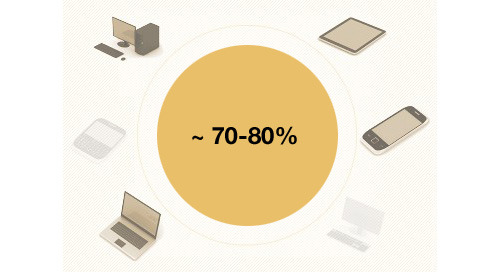HTML5 browser support : a study using the ability to create PDF flip book publications for the web
10 December 2013
The support for HTML5 is still growing rapidly and while it is quite easy to estimate how large the market share is for HTML5 compatible browsers, it is much more difficult to make an estimate as to which devices that are powerful enough to really make use of the HTML5 technologies that are being used.

Mobile browser market share November 2013, source: netmarketshare.com
While most Android devices are using the latest super competent versions of Google Chrome, they still lack in CPU to really be able to make use of all features. Mobile Safari is in our experience still the most performant mobile browser, but is still to date (5 years from its initial release) experiencing stability problems and intermittent crashes when you push it to use more advanced HTML5 features. There are no official statistics on how frequent these crashes occur, but many studies point to Safari as one of the most crash prone browsers.
To overcome problems with memory and CPU usage, a mobile version which reduces the CPU usage is still the only real way through this. As an example, FlexPaper uses a mobile-optimized version of its HTML5 flip book viewer (see example here). This version only uses browser features which have been proven to be less power and memory hungry.
OUR ESTIMATE OF THE ACTUAL MARKET SHARE VERSUS THE USABLE
There are many different sources for browser statistics. For example W3Schools, StatCounter Global Statistics. Together with statistics over browser features, from sites like HTML5Readiness and findMeByIP, it is relatively easy to make an estimate as to how large the market share is for browsers supporting the majority of HTML5 features is today. Our current estimate is that 90% of all browsers are HTML5 compatible in a reasonable sense.

To get some sort of sense of how large portion of the market that can really use these features, you then have to take a look at the devices that are out in use. From looking at these statistics, we believe that an accurate estimate today is somewhere in the range of 70-80% of how many browsers that are _actually _useful in a HTML5 sense. You can find the above illustration in more detail on our “HTML4, Flash or HTML5” page. This page also outlines which features that are supported on the major devices and browsers.
CONTINUOS FLEXPAPER IMPROVEMENTS

We’re continuously improving our HTML5 rendering mode for mobile devices. Our upcoming December release gets to enjoy even higher rendering quality for retina devices. Contact us for a pre-release!